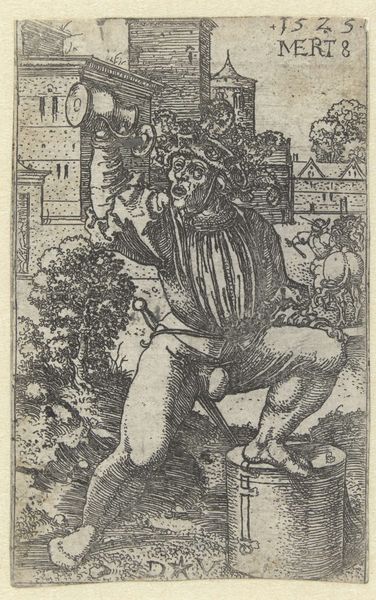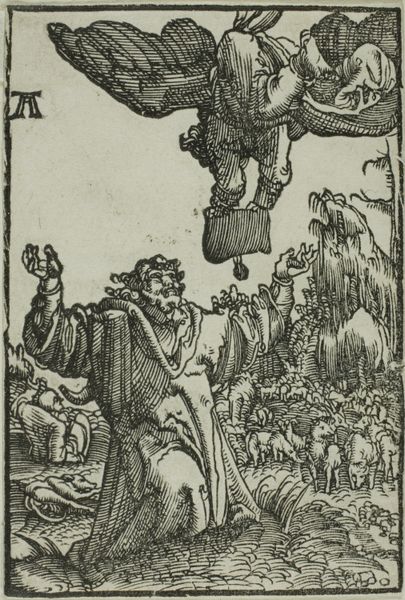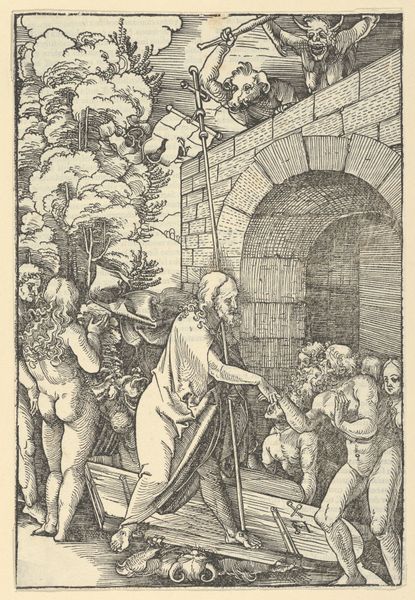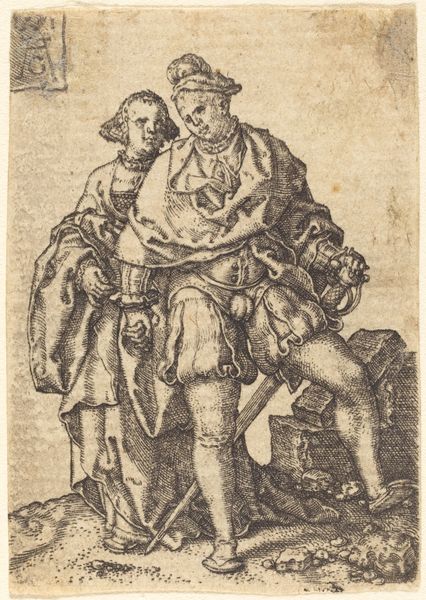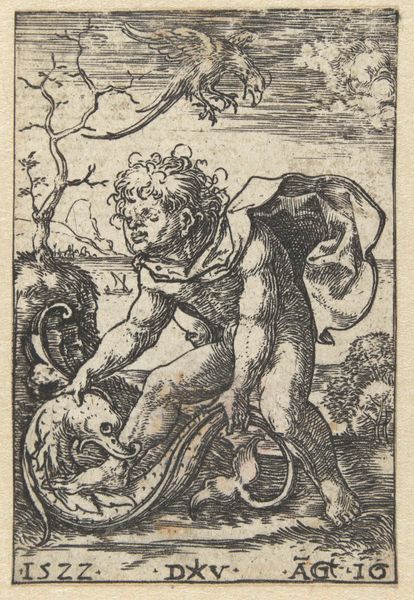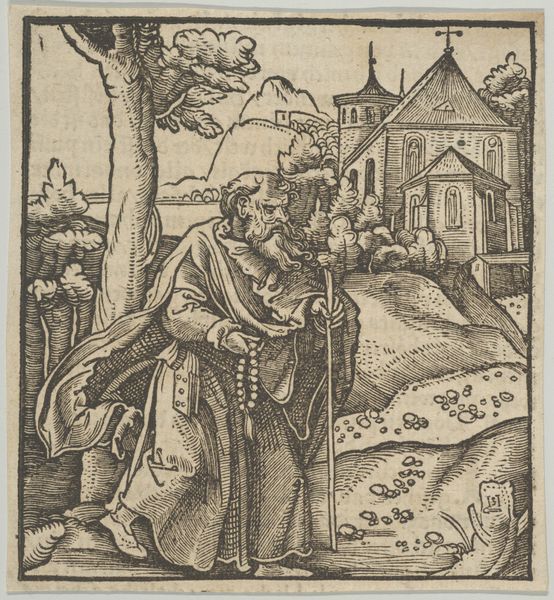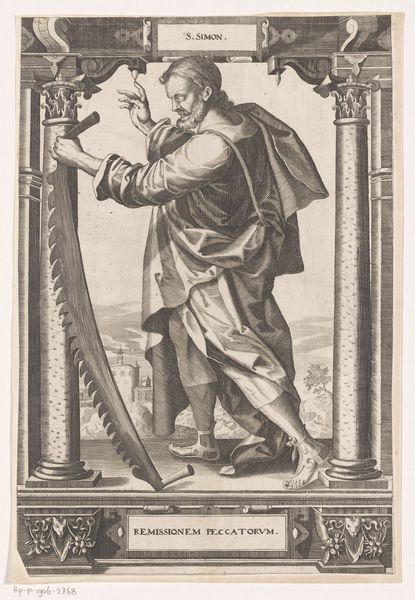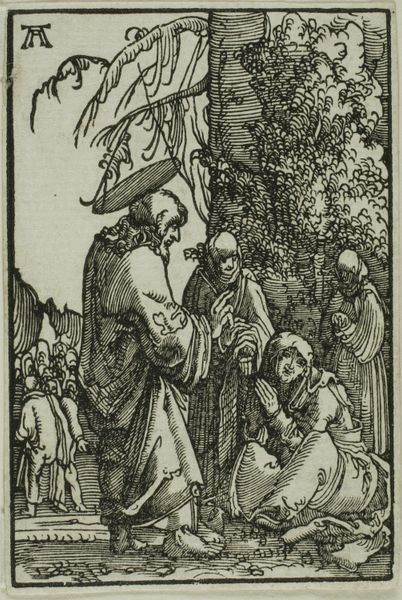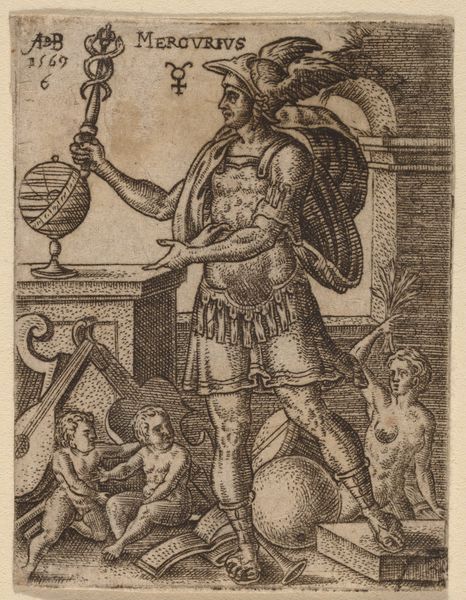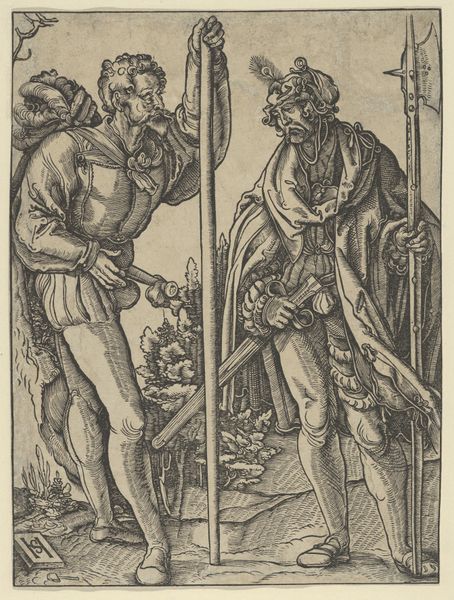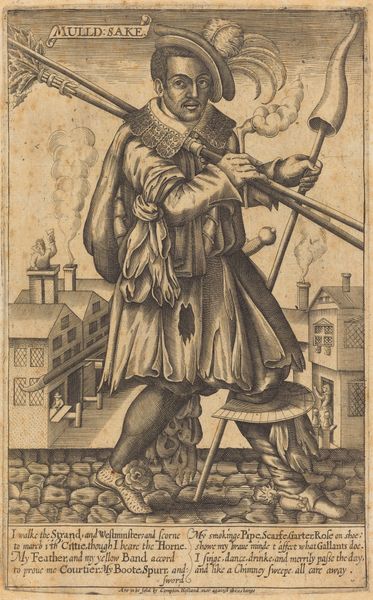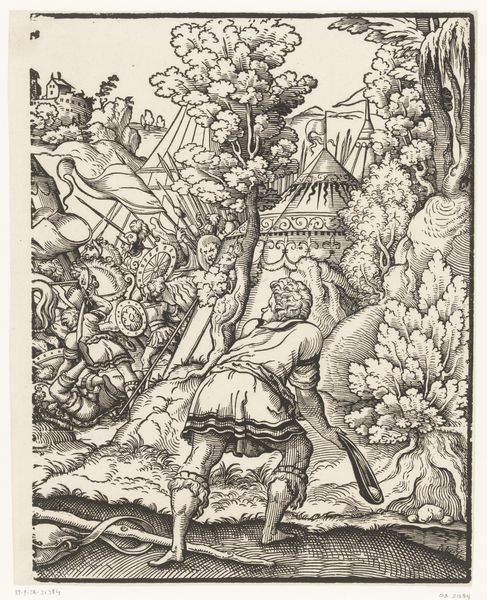
drawing, print, engraving
#
drawing
#
allegory
# print
#
figuration
#
history-painting
#
northern-renaissance
#
engraving
Dimensions: Sheet: 9 7/16 × 6 7/16 in. (23.9 × 16.3 cm)
Copyright: Public Domain
Editor: Here we have Hans Baldung’s "St. Catherine," a print from sometime between 1500 and 1510. The image is quite striking, full of texture created by the engraving, but also deeply unsettling. How do you interpret this work, especially its depiction of female power? Curator: Baldung's “St. Catherine” is more than just a religious figure; it's a complex statement about female intellect and agency in a patriarchal society. The Northern Renaissance was grappling with humanist ideals alongside traditional religious doctrines, and Baldung positions Catherine, a woman known for her philosophical prowess, as a figure who transcends those limitations. Editor: Can you expand on that transcendence? The wheel, usually a symbol of her martyrdom, looks almost like a throne here. Curator: Precisely! The broken wheel becomes a site of power, reclaiming a symbol of oppression. Look at her gaze – steady, unwavering. This isn't a passive depiction of a saint; it's an active assertion of intellectual authority. Think about how contemporary feminist readings might see this subversion. How does this image challenge, or perhaps even reinforce, conventional gender roles of the time? Editor: That’s really interesting, especially given how limited women’s opportunities were back then. I hadn’t considered the gaze as a form of defiance. Curator: It is. This piece invites us to question the ways in which women’s voices have been historically silenced and how art can be a potent tool for resistance and reinterpretation. It prompts us to think critically about power structures then, and even now. Editor: I'll definitely view early Northern Renaissance art with fresh eyes from now on. It is great to consider art not only for its aesthetics but also for how it relates to power and societal structure.
Comments
No comments
Be the first to comment and join the conversation on the ultimate creative platform.
